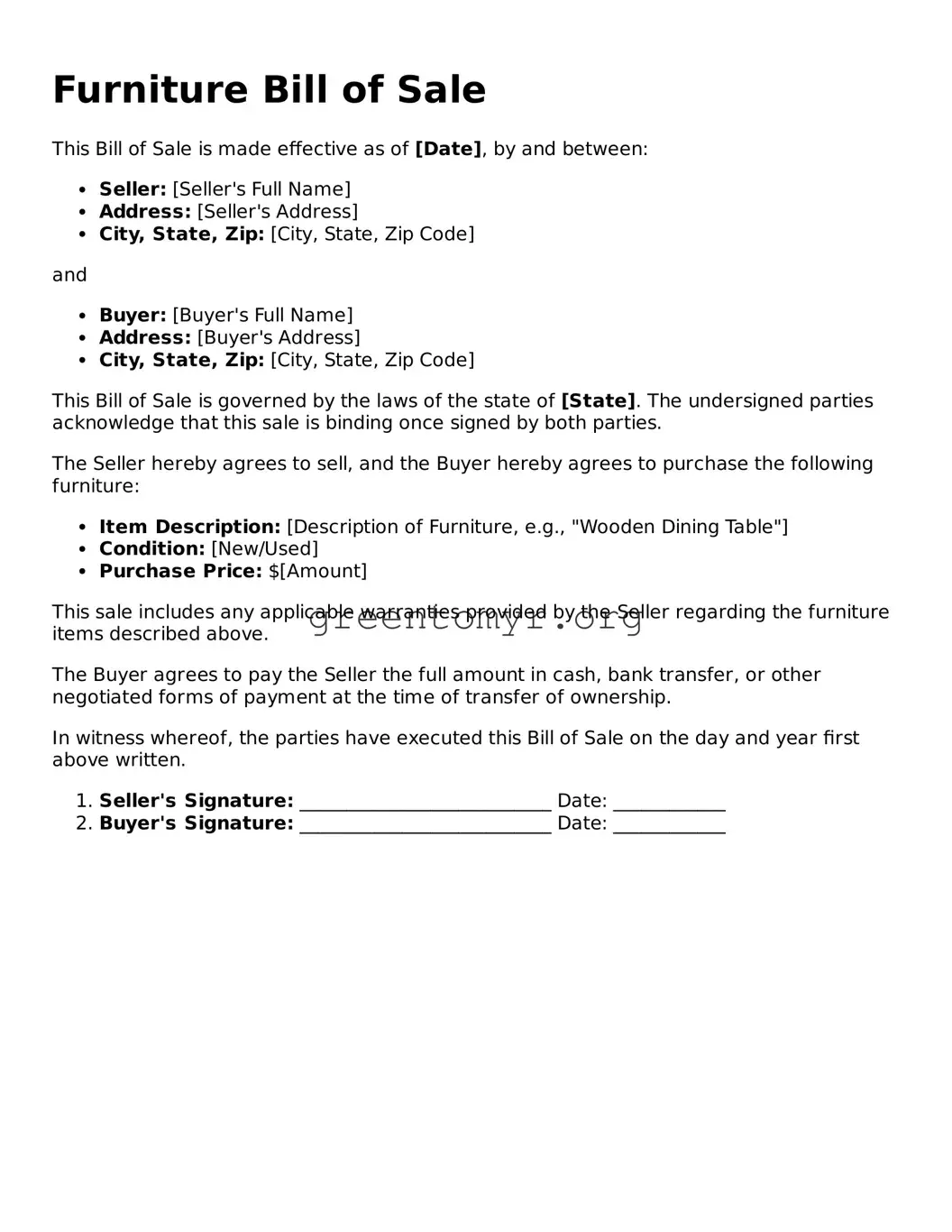Furniture Bill of Sale
This Bill of Sale is made effective as of [Date], by and between:
- Seller: [Seller's Full Name]
- Address: [Seller's Address]
- City, State, Zip: [City, State, Zip Code]
and
- Buyer: [Buyer's Full Name]
- Address: [Buyer's Address]
- City, State, Zip: [City, State, Zip Code]
This Bill of Sale is governed by the laws of the state of [State]. The undersigned parties acknowledge that this sale is binding once signed by both parties.
The Seller hereby agrees to sell, and the Buyer hereby agrees to purchase the following furniture:
- Item Description: [Description of Furniture, e.g., "Wooden Dining Table"]
- Condition: [New/Used]
- Purchase Price: $[Amount]
This sale includes any applicable warranties provided by the Seller regarding the furniture items described above.
The Buyer agrees to pay the Seller the full amount in cash, bank transfer, or other negotiated forms of payment at the time of transfer of ownership.
In witness whereof, the parties have executed this Bill of Sale on the day and year first above written.
- Seller's Signature: ___________________________ Date: ____________
- Buyer's Signature: ___________________________ Date: ____________
